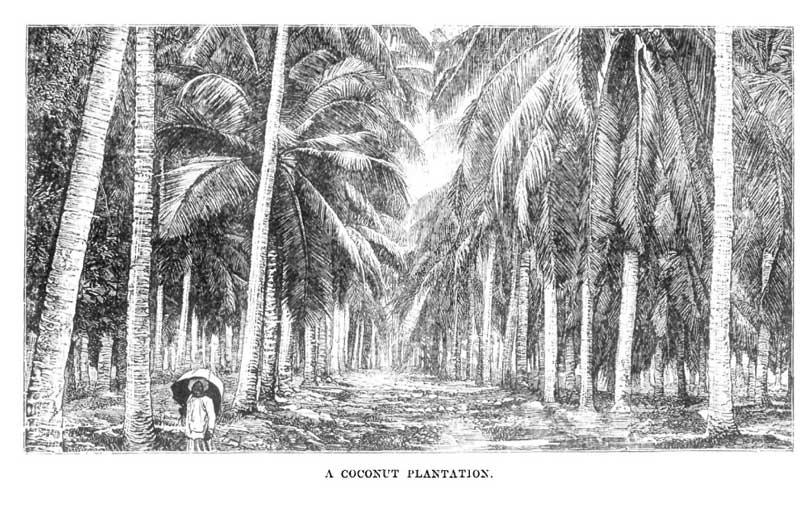Reply To:
Name - Reply Comment
Last Updated : 2024-04-24 15:12:00
 In India, as in Sri Lanka, the absence of sub infeudation in the pre-colonial phase provided colonial officials with an opportunity to create a loyal local elite. What is generally assumed is that this elite class suddenly sprang from nowhere, and that their emergence was facilitated by colonial policies. But this was true of neither India nor Sri Lanka: the bourgeoisie initially was an upper stratum of an intermediate upward aspiring class of traders, toll collectors, and rent farmers who were restricted to investments in land. In other words, there was a changing layer of traders and merchants who, despite the restrictions placed on them, managed to rise to the top by fortuitous circumstances. The jameendhars in Bengal and Mudliyars in Sri Lanka were therefore never a permanent class; they had to give way to a nouveau riche, itself rising from the ranks of a pre-capitalist, occupation-based petty bourgeoisie.
In India, as in Sri Lanka, the absence of sub infeudation in the pre-colonial phase provided colonial officials with an opportunity to create a loyal local elite. What is generally assumed is that this elite class suddenly sprang from nowhere, and that their emergence was facilitated by colonial policies. But this was true of neither India nor Sri Lanka: the bourgeoisie initially was an upper stratum of an intermediate upward aspiring class of traders, toll collectors, and rent farmers who were restricted to investments in land. In other words, there was a changing layer of traders and merchants who, despite the restrictions placed on them, managed to rise to the top by fortuitous circumstances. The jameendhars in Bengal and Mudliyars in Sri Lanka were therefore never a permanent class; they had to give way to a nouveau riche, itself rising from the ranks of a pre-capitalist, occupation-based petty bourgeoisie.
The first three decades of British rule oversaw the gradual transformation from a mercantilist to a plantation economy. This did not entail a liberalisation of the economy; on the contrary it continued certain policies that had been enacted before. There were, however, two important changes, both enacted in 1832: vidanes were debarred from opening arrack taverns, and the collection of rents was changed from tavern to administrative divisional basis. The first had the effect of eliminating goyigama arrack renting vidane families such as the Hettiarachchige Pintos from the trade; the second had the effect of eliminating weaker renters in favour of the more enterprising karava renters from Moratuwa and Panadura.
 Fortunes from arrack renting led to a spurt in capital accumulation which, unfortunately, was not diverted to more productive enterprises. Here the Indian experience can be distinguished from the Sri Lankan, since in India the colonial bourgeoisie, following their flirtations with British rule (many of them, including Ram Mohan Roy and Dwarkanath Tagore, opposed the Indian Mutiny of 1857), came to abandon their position and began criticising colonialism “as the chief obstacle” to the transition to capitalism; as Aditya Mukherjee has noted, the Indian nationalists were among the first in the world “to evolve a multi-pronged, detailed, and sophisticated critique of colonialism.” By the time of independence, the local bourgeoisie had acquired a Janus face: while they “entered into compromise with British imperialism”, they also “spearheaded the struggle for national emancipation.”
Fortunes from arrack renting led to a spurt in capital accumulation which, unfortunately, was not diverted to more productive enterprises. Here the Indian experience can be distinguished from the Sri Lankan, since in India the colonial bourgeoisie, following their flirtations with British rule (many of them, including Ram Mohan Roy and Dwarkanath Tagore, opposed the Indian Mutiny of 1857), came to abandon their position and began criticising colonialism “as the chief obstacle” to the transition to capitalism; as Aditya Mukherjee has noted, the Indian nationalists were among the first in the world “to evolve a multi-pronged, detailed, and sophisticated critique of colonialism.” By the time of independence, the local bourgeoisie had acquired a Janus face: while they “entered into compromise with British imperialism”, they also “spearheaded the struggle for national emancipation.”
After WW I, Indian economy came to be divided or dichotomised between finance capital, primarily owned by British capitalists, and industrial capital, controlled by
local interests
If in India the changing layers of the traders, financiers, and speculators on the one hand and industrialists, mill owners, technicians, and engineers on the other led to contradictions with imperialism, in Sri Lanka colonial administrators were able to eliminate the potential for any such contradictions from the bourgeoisie. Suniti Ghosh’s classification of two layers of the capitalist class in India – compradore and heavily tilted to finance and speculation on the one hand, and nationalist and heavily tilted to industry on the other – does not hold true for Sri Lanka, since here the British had created a class of brown dependants whose dominance they could guarantee through titles, honours, and social advancement. Thus, whatever sector they operated in, they could not stay independent of the colonial structure.
After World War I, the Indian economy came to be divided or dichotomised between finance capital, primarily owned by British capitalists, and industrial capital, controlled by local interests. Revisionist historians like Niall Ferguson and Tirkanthar Roy have contended that this led to rises in real wages, national income, and industrialisation, when as Mukherjee has shown the manufacturing sector, even after being “taken up” by locals, contributed a dismal eight percent of the GNP in 1951. The Sri Lankan experience was worse, in that no attempt at industrialisation was made; this soon frustrated the petty bourgeoisie, particularly the militant sections led by stalwarts like D. C. Hewawitharana,N. S. Fernando, and D. D. Pedris (the latter of whom was the father of Henry, whose rise to the ranks of the Western educated elite provides evidence of the upward aspirations of this class).
Because of sudden and favourable rises in commodity prices, the Sri Lankan bourgeoisie were able to rise above the intermediate milieu from which they had originated. The intrusion of moneylenders, investors, and speculators from India further entrenched their class, for the simple reason that the more powerful petty bourgeois commercial sectors, in Sri Lanka, came to be dominated by Indian merchants: trade by Borahs and Parsees, lending by Chettiars and Coastal Moors. Hence the upper echelons of the bourgeoisie faced no serious challenge from the lower middle class; they continued to be allied with British plantation interests. The petty bourgeoisie were assured from time to time of ascents to the ranks of that bourgeoisie, but such ascents were limited to spurts in the commodity sector, as with the opening up of arrack renting in the 1830s, the diversion to coffee, coconut, graphite, and tea after the 1850s, and the rubber boom of the 1900s. There was, in other words, a wedge between the two.
Notwithstanding this the petty bourgeoisie kept on attempting to make it to the top. However, owing to the restrictive colonial framework they had to put up with, and their inability to challenge that framework politically, they were compelled to display their frustrations with the establishment by resorting to the cultural; the revival this resulted in was both crude and communalistic. (It’s a mistake to assume that the lower middle class were at the forefront of this revival, since they were led by the Sinhala bourgeoisie; on the other hand, without them those leaders would have found it difficult to sustain its momentum.)
Here too the Indian and Sri Lankan experiences differed, and dramatically so. The Bengali Renaissance manifested itself in three stages, which showed up contradictions between two forces that were trying to come together as one: Hinduism and Western modernity. The Indian elite were at the forefront of all three: the Brahmo Samaj in Bengal, the Arya Samaj in the Punjab, and the Theosophical Movement. These later led to the formation of the Congress Party, the founding president of which, A. O. Hume, was a Theosophist.
In other words the cultural revival was nurtured in India by the Indian elite before the Theosophists came. In Sri Lanka, however, the cultural revival, an essentially petty bourgeois phenomenon, did not really fall into the hands of the elite until the Theosophists took over. That bears out the view, of writers like Kumari Jayawardena, that in the absence of a proper bourgeois-led economic front against colonialism, there was no one “to lead these religious-cultural agitations into a fully fledged anti-imperialist movement.”
With no prospects above them, the lower middle class turned to communalism, raging against foreign groups that had been allowed to rise over them. When Anagarika Dharmapala sugar-coated his pleas for industrialisation with ethno-nationalist rhetoric, they preferred the coating to the pill; Gunadasa Amarasekara was hence not incorrect when he wrote that Dharmapala’s project was hijacked by opportunists who had mistaken the one for the other.
In Sri Lanka, colonial administrators were able to eliminate the potential for any such contradictions from the bourgeoisie
Such movements eventually became limited to the cultural domain: the novels of Piyadasa Sirisena; the plays of Charles Dias and John de Silva; and the paintings of Sarlis. These did not challenge colonial structures, and in fact at times they even reinforced popular colonial stereotypes: the character of Sri Wickrama Rajasinghe in John de Silva’s play, for instance, conformed more to anti-Nayakkar British propaganda than actual history.
Despite these contradictions, the lower middle class never stopped “aspiring upward.” They sent their children to the best schools, even if it meant racking up debts (which made them the target of J. P. Obeyesekere’s vitriol in the 1880s when education reforms were up for debate in the Legislative Council); many of them idealised a life in the civil service, and were as enamoured of Westernisation as the bourgeoisie (even if they repudiated it in public); they subscribed to an “Orientalist” though mythical belief in a superior past that was partly based on parallels drawn by 18th and 19th century philologists like William Jones between Aryan and Sanskrit civilisation; and many of them were as hostile to working class struggles as the bourgeoisie, even though they were more in touch with the urban working class. With such inscrutable paradoxes did they continue to push forward their demands.
Sri Lanka was never, at any point, what the economist Michał Kalecki referred to as an “intermediate regime” led by the lower middle class and rich peasantry. But in their ability to hijack the progressive sections of political movements they had a hand in shaping – from the Old Left to the SLFP to the New Left in the form of the JVP – the lower middle class and the rich peasantry remained very much dominant. It is outside the scope of these articles to look into their post-independence transformation. Suffice it to say that their transformation is still ongoing; to delve into it would be simplistic and self-defeating, since in Sri Lanka, as in the United States, the lower middle class remains both complex and unstable.


Add comment
Comments will be edited (grammar, spelling and slang) and authorized at the discretion of Daily Mirror online. The website also has the right not to publish selected comments.
Reply To:
Name - Reply Comment
US authorities are currently reviewing the manifest of every cargo aboard MV
On March 26, a couple arriving from Thailand was arrested with 88 live animal
According to villagers from Naula-Moragolla out of 105 families 80 can afford
Is the situation in Sri Lanka so grim that locals harbour hope that they coul